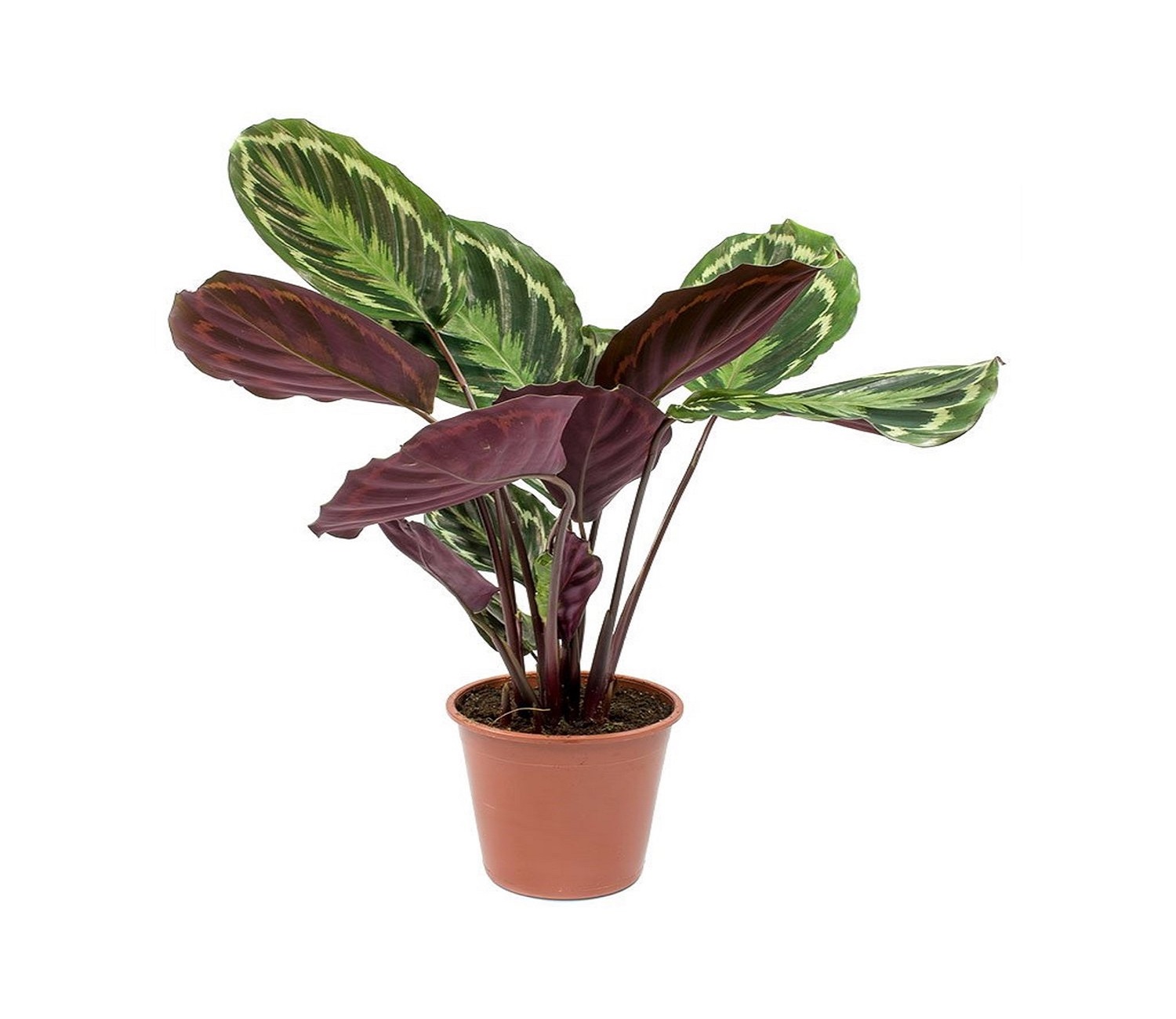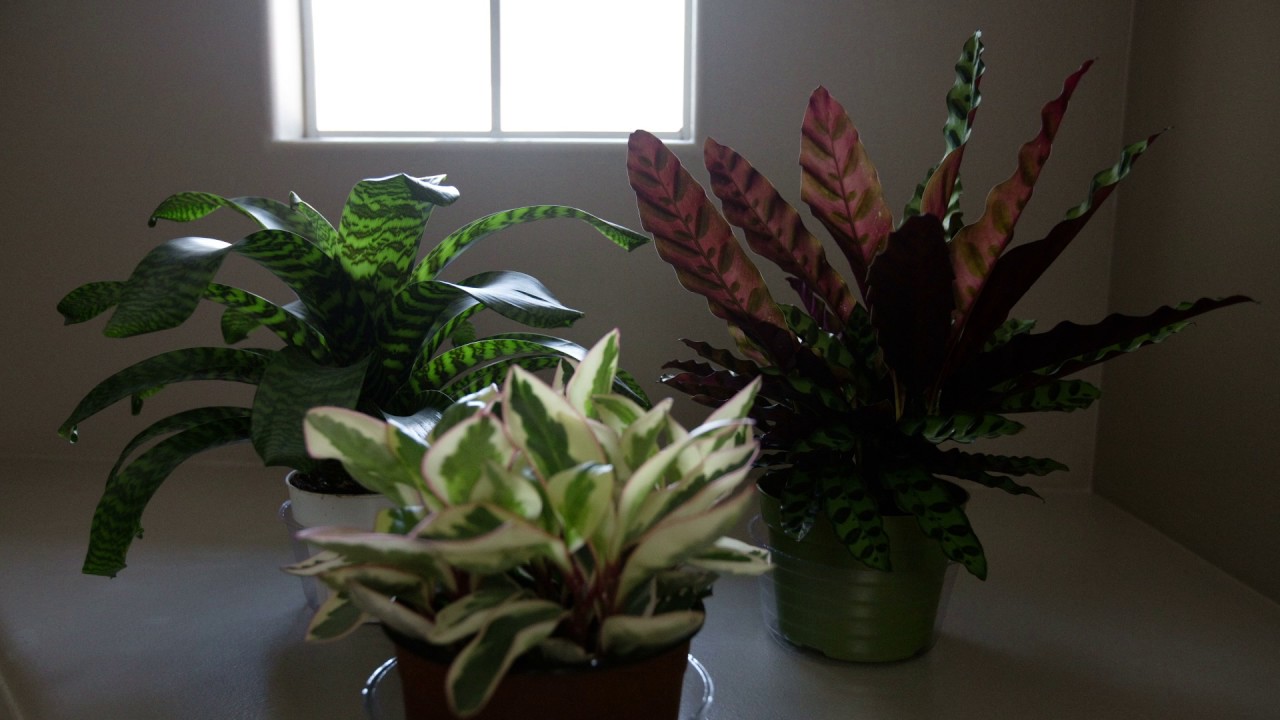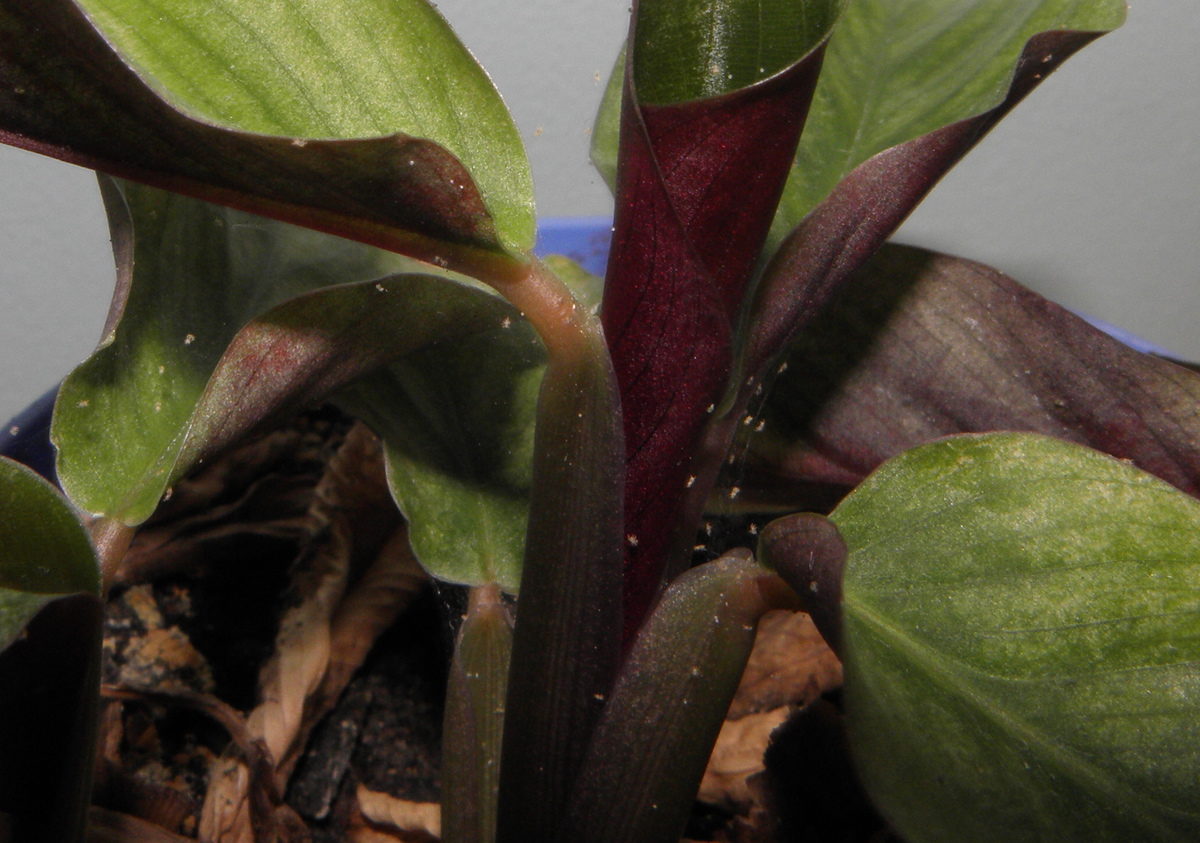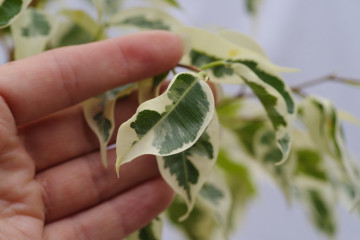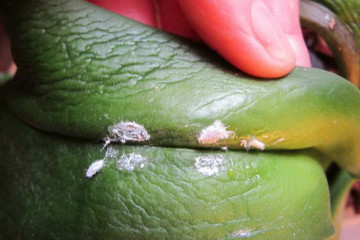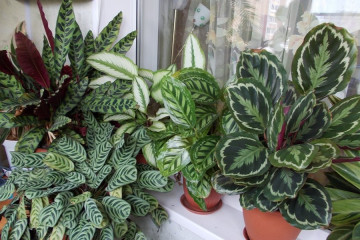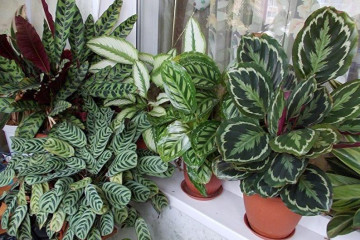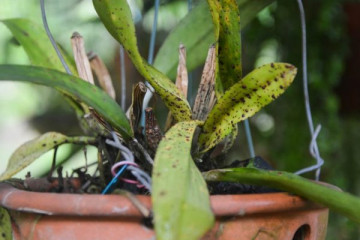Calathea - plant diseases and pests
Content:
Calathea attracts the attention of many flower growers due to its unusual appearance and bright greenery. With proper care, the plant will delight others with its beauty, which can outshine other species. Diseases in calathea are a common occurrence, since the flower is very whimsical to care for. At home, only experienced florists can grow a plant with high quality. Calathea, leaves dry around the edges, what to do and how to avoid this problem - this question is asked by many flower lovers. Home care for the calathea flower, diseases, their treatment and prevention are the topic of this material.
Why a plant can get sick
If we talk about a houseplant called calathea, diseases and pests can appear on it only due to improper care. This is what experienced flower lovers who successfully grow various varieties do not cease to repeat.
First of all, attention should be paid to watering. Excessive soil moisture, cold or hard water are factors that can negatively affect the quality of growth and development of the flower. After watering, no drops should remain on the leaves of the plant, as this is not always useful.
The composition of the soil also plays a significant role. Greasy and rotten soil can harm the growth of calathea. The cause of rotting is almost always excess liquid, which is retained in the soil due to poor drainage. If moss, mold or mildew appears on the surface, they should be removed immediately.
A correctly selected pot is also reflected in the state of the flower. Small capacity will slow growth. A pot that is too wide and too high also negatively affects the life of the plant.
Leaves can dry out due to lack of lighting or high temperature in the room. Moreover, each type of plant requires compliance with certain rules.
Fertilizers play a special role - they need to be applied according to a specific schedule, in the proportions indicated by the manufacturer. When using folk remedies as top dressing, mineral complexes must be applied in much smaller quantities.
Calathea sheds leaves
Calathea leaves can be shed for several reasons. Among the main ones:
- insufficient watering;
- the appearance of pests on the flower;
- improper lighting;
- cold.
First of all, you need to make sure that there are no parasites on the flower. To do this, you should carefully examine each leaf, soil and stem of the plant. Then it is necessary to adjust the care, in particular the temperature regime.
Leaves turn pale, turn yellow, spots appear
Why do Calathea leaves turn yellow interests many flower growers. The appearance of yellowness occurs due to a lack or excess of fertilizers. Feeding Calathea should take place from March to September, once every 2 weeks. From October to March, once a month.
It is necessary to use special feeding for ornamental plants. The dosage should be halved from that indicated on the package.
Why calathea leaves curl is a question that can be answered if we reconsider the correctness of watering and the parameters of air humidity.
When brown spots appear on the leaf, it may indicate sunburn. Spots appear in places where drops of water have remained on the leaves, and the sun has dried them. To prevent this problem, it is necessary to spray the plant with a fine spray.
Sometimes sticky transparent crystals appear on the back of the leaf, and with this the plate is twisted. The reason for this ailment is in sudden changes in temperature and humidity. In this case, it is necessary to adjust these indicators and exclude drafts. Any cold snap below 18 ° C can be detrimental to the flower.
Calathea: leaves dry around the edges, what to do
Why calathea leaves begin to curl and dry depends on several factors. Poor watering and low air humidity are among the main reasons. It is necessary to increase the volume of watering liquid and spray the flower periodically.
If these measures did not help improve the condition of the plant, it is necessary to cut off the leaves that have begun to dry out and try to save the root system. Place the pot on moistened expanded clay and cover with a bag. When new shoots appear, the bag can be removed.
Before answering the question of what to do if the leaves of the calathea are curled, it is necessary to establish the cause of the pathology. In most cases, the answer lies in the lack of moisture in the air around the flower. Ideally, the moisture percentage should be at least 90%. This is not easy to maintain, so it is recommended that you purchase a humidifier.
If it is not possible to buy such a device, it is necessary to spray the leaves with filtered and settled water every day. You cannot use ordinary tap liquid, since after it lime stains remain on the leaves, which are extremely difficult to remove in the future. This rule especially applies to calathea with velvety leaves.
If the leaf begins to dry out or curl into a tube, it must be removed from the plant in a timely manner. Lighting must be made diffused and soft.
If the tips of the leaves dry on the calathea flower, it is necessary to change the location of the flower. Such a move looks quite reasonable and often helps to save the shoots.
Leaves can be twisted not only due to improper care or disease. The peculiarity of the calathea is that all representatives of this species twist the leaf blades at night. This is normal and should pass during the day.
Spots on calathea leaves, twisting and drying of the trunk, can occur for many reasons. Before treating the plant, it is necessary to accurately establish the source of the problem, otherwise there will be no positive result.
Roots rot
The leaves of the calathea plant turn yellow, the stem and roots rot most often due to hypothermia and excessive watering. Novice flower growers often do not know how to properly care for a whimsical calathea, so a number of problems arise.
To eliminate unpleasant symptoms, it is necessary to reduce the amount of watering and raise the air temperature to + 23-28 ° C.
Wrinkled trunk
The calathea's trunk is formed from dead old leaves. In a healthy plant, it is firm and matches the color of the leaves. There should be no stains or sticky inclusions.
Calathea with a shriveled trunk needs urgent treatment.This symptom indicates that the plant is dying. If problems are not noticed in time, the barrel may twist at a non-standard angle.
This is due to the fact that the roots rot, and the flower ceases to receive nutrients. It is difficult to save calathea in this case. It is recommended to cut the crown off and root it.
Rot on leaves and stem
Any rot processes begin in plants due to excessive watering and fungal infection.
Excessive fertilization of the soil can also lead to the multiplication of putrefactive bacteria that appear in the places of root burns. Therefore, it is important to adhere to the norms of feeding. Do not allow waterlogging of the soil and stagnation of moisture in the soil.
Pests on kalatea
If we talk about the indoor flower calathea, pests in the form of parasites are most often found due to various problems in the care and growing of the plant:
- Spider mite. Symptoms of the parasite are white bloom on the back of the leaves. Over time, a cobweb becomes noticeable on the plant. The tick is very small and difficult to see. The leaves first turn yellow, and then they begin to fall off. The pest prefers dry air, so the flower must be sprayed frequently. In addition, mechanical treatment is carried out with an insecticidal agent.
- Shield. Upon infection, small round plaques appear on the stem and leaves. Over time, the leaves turn pale and dry out. The plant can be cured if it is treated with a solution of laundry soap. To consolidate the results, it is necessary to spray with Fitoverm.
- Thrips. Small dots appear on the leaf plate, which gradually turn into spots. On the soil, small oblong insects are noticeable, which move in leaps and bounds. If parasites are found, it is necessary to rinse the plant under the shower and spray it with Intavir. To fix the result, you can repeat the spraying two times. The same solution is used to treat the soil in which the flower is located.
With early detection of pests, it is not difficult to deal with them, since there are many insecticidal and folk remedies.
Calathea (home care, illness, treatment are described above) is an attractive shrub that is often used as a decorative decoration. When the leaves of a calathea flower curl, every grower should know what to do. The plant requires increased attention to itself, and it must be grown taking into account all the rules.

